- S.D. Eibar ready for maiden La Liga outing
- SD Eibar stengthen ahead of debut La Liga season
- Can ‘Super Mario’ live up to expectations in Madrid?
- MAN IN THE GROUND – Brentford 0 – 4 Osasuna
- Historic Basque derby welcomes S.D. Eibar to La Liga
- Munich to Madrid, via Brazil – Tony Kroos
- Rakitic in Spanish Switch
- Can Spain find redemption in Rio?
- Viva Espana! A season of redemption for Spanish football
- From the old to the new: who can fill the void in years to come for La Roja?
Vilanova returns as Barca stroll to emphatic derby win – Barcelona 4-0 Espanyol: Tactical Analysis
- Updated: 9 January, 2013
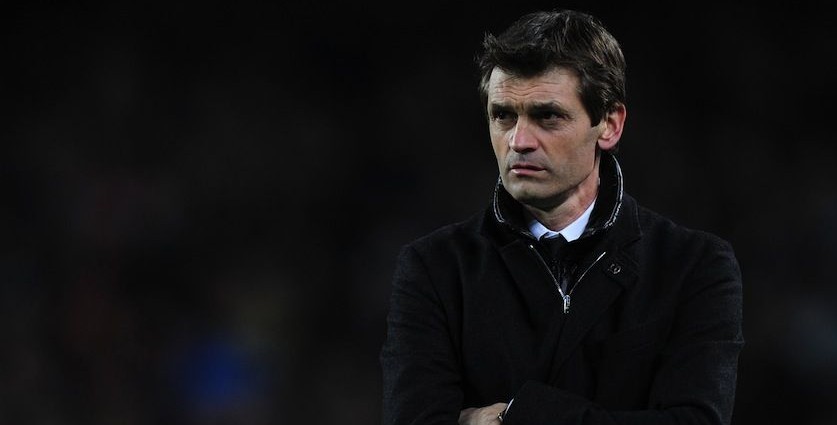
Barcelona turned in a rampant first half display, during which time they battered Espanyol and had the game wrapped up by half time courtesy of a four goal lead.
This was a game in which Barcelona produced a performance of considerable quality even if their opponents were sufficiently lacklustre.
Tito Vilanova returned to the dugout having missed just one league game through illness. He named what is arguably his strongest eleven. Taking charge of Espanyol for the fifth time, Javier Aguirre set his Espanyol side out in a 4-5-1 formation with ex Barcelona player Sergio Garcia as the lone striker.
Overall
With Barcelona already 4-0 ahead at half time, the game was over as a contest. The key aspects from a tactical perspective arrived mainly during the first half of real quality and verve from Barcelona.
There were still a number of points during the second period but Espanyol were soundly beaten by that point and Barcelona were already very comfortable.
Sergio Busquets
Sergio Busquets is well known for his positional ability sitting in front of the defence and recycling possession quickly and accurately but this game illustrates that Busquets possesses other qualities too.
The midfielder completed more passes than anyone else on the pitch, even Xavi, with 121 passes completed from 137 attempted.
Critics of Busquets will claim his passing is always short ignoring his ability to play rapid first time passes. Against Espanyol, he was able to showcase his range of passing.
Busquets provided the assist for Barcelona’s third goal in the 26th minute. By this point Busquets had already played a number of diagonal crossfield passes changing the angle of Barcelona’s attacks and forcing Espanyol to shuffle back and forth across the pitch.
His forward pass through the centre of the defence was read perfectly by Pedro who accelerated beyond Moreno and clipped the ball over the advancing Casilla. Espanyol failed to press Busquets in the midfield.
The warning sign was not heeded and in the 42nd minute, Busquets played another through ball which narrowly evaded the forward running Cesc Fabregas.
Two passes of real quality and vision displaying the awareness and technique of Busquets combined with the forward runs from his team mates.
Iniesta and Cesc – Sharing The Left
The arrival of Cesc Fabregas and his subsequent integration into the side has provoked much debate. Initially positioned on the left side of attack, his form fluctuated. Now however, Vilanova appears to be about to reap the rewards from Guardiola’a tactical tinkering.
Fabregas is now positioned in the midfield with license to break forward whilst Iniesta, although he confirms it’s not his favourite position, situated on the left of attack. The positions are nominal only due to the movement of both players. Their relationship has developed to the point whereby they now combine and interchange frequently both safe in the knowledge that the real width will be provided by the marauding Jordi Alba from left back.
The graphic below shows Iniesta’s heat map:-
The heat map for Cesc Fabregas is remarkably similar. Both players prepared to move to the left when required and equally drop into the centre as need be. It enables Cesc to burst forward into the penalty area to receive the kind of passes that Busquets was making. It’s this fluidity of movement which makes it so difficult for opponents to stop even if they employ a low defensive block.
And it’s not just in the midfield area where the movement and interchanging is occurring.
Pedro Rodriguez
Following an injury hit season, Pedro Rodriguez has returned to full fitness this season but the goals have not yet arrived. Going into this game, he had scored just one league goal.
Deployed on the right wing, Pedro seldom stayed there during this game as the graphic below highlights:-
The forward from Tenerife frequently made diagonal runs to a central position seeking through passes as Messi dropped deep and to the right. For a period of the game, Pedro operated as the No9 with Messi wide.
His first goal perhaps carried an element of luck but Pedro was still in the right position to take advantage of that luck. His second goal was a classic run off the shoulder of the last defender.
Pedro scored two further goals which were ruled offside. On both occasions he was the main striker breaking into the box at speed with Messi much deeper.
Pedro’s positioning was possible because Dani Alves produced his best performance of a below par season. Quite often Alves was alone on the right flank as he moved up and down offering tactical width to the side.
Barcelona Fluidity
And the constituent parts highlighted above provided Barcelona with a display arguably on a par with anything produced during the Guardiola era.
The fluidity of movement and the interchanging of position is something which has to be developed on a training ground over a number of years. It’s not a style of play can be perfected quickly.
The real issue for Barcelona now is can this level of performance be sustained for the remainder of the campaign both at home and abroad and can it be produced against higher quality opponents?
Espanyol – Where Did It Go Wrong?
Still, it’s difficult to completely ignore the assertion that Espanyol contributed to their own downfall with a woefully inadequate performance.
“You can lose face, but you have to give more,”
Capdevila summed up the issue for Espanyol perfectly.
The loss of the early goal would have been a considerable loss to Espanyol, but they appeared to be devoid of motivation or aggression for the majority of the game. Barcelona enjoyed far too much freedom and time on the ball.
The graphic below highlights where Espanyol made tackles:-
Espanyol were not stopping Barcelona further up the field. They retreated to the edge of their penalty area and tried to hold Barcelona off at the point by defending in a compact and narrow format. Previously the template for halting Barcelona but last night it never looked like being successful. The loss of the first goal so early made that approach futile and it developed into something resembling damage limitation thereafter.
Espanyol should have been able to compete, to press and harass Barcelona and make them work harder for their victory. It was too nice. Espanyol never disturbed Barcelona. This is not a suggestion that Espanyol simply kick their opponents but the team with the worst disciplinary record in La Liga this season was surprisingly disciplined and meek.
Conclusions
Barcelona produced a brilliant first half performance but the inherent poverty of Espanyol’s play leaves you wondering if they could have produced the same level against a more competitive opponent. They will get that opportunity next week when they visit La Rosaleda.
Aguirre will have arrived at the Camp Nou expecting nothing and received precisely that. The fans will expect a response next week in a far more meaningful match whet they entertain Celta Vigo. A similarly apathetic approach will not be tolerated.
_______________________
For more analysis and tactical insight on the Spanish game, visit the excellent Chalk on the Boots
Follow @icentrocampista



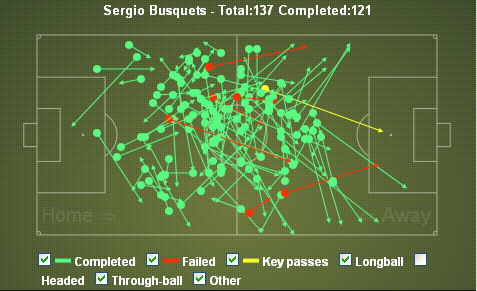
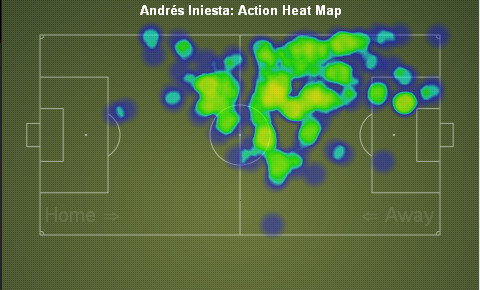
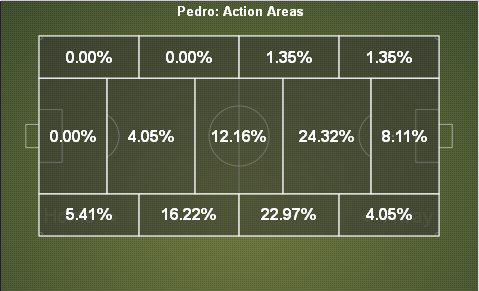
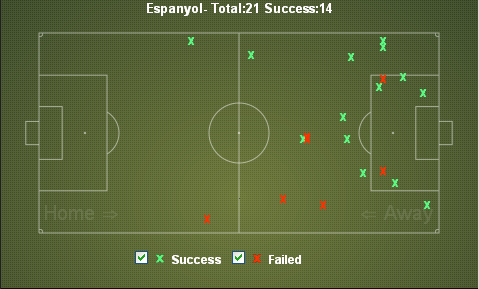
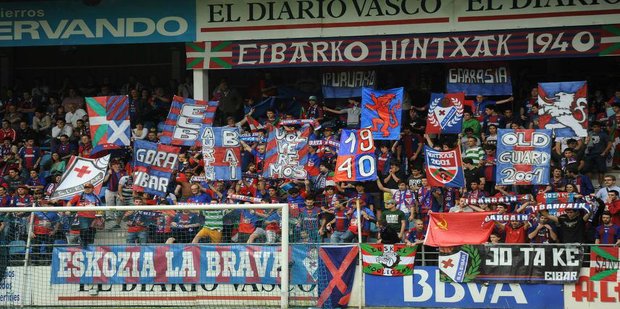

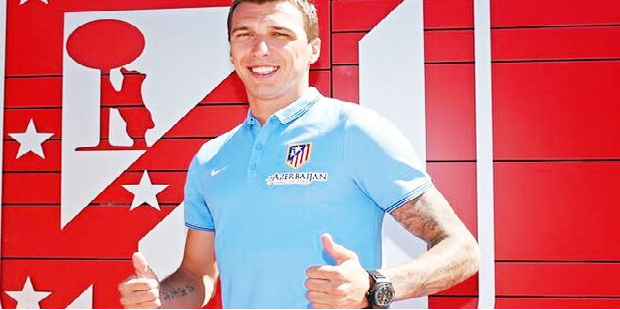


You must be logged in to post a comment Login